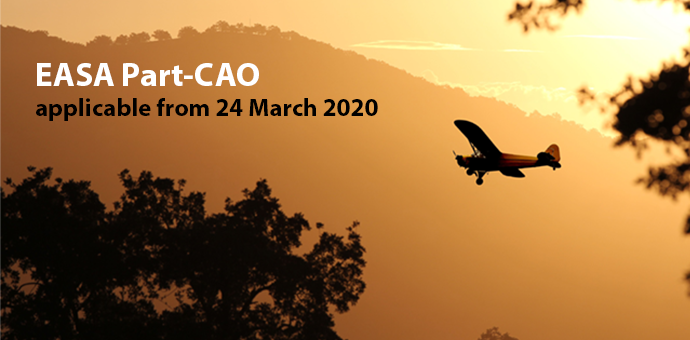Introduction by Steve Bentley – CEO of Sofema Aviation Services www.sassofia.com
What is a Combined Airworthiness Organisation (Part-CAO)?
Essentially it provides a new simplified organisation approval for General Aviation (GA) which provides an alleviation against many of the requirements (For example – No Safety Management System (SMS)).
The Part-CAO was not created only to replace the Subpart F Maintenance Organisation, but rather to offer a completely new type of organisation, which is specifically adapted to the needs of GA.
In addition, there is typically a reduced involvement of the Competent Authority.
A Combined Organisation is allowed to obtain the following privileges:
a) Maintenance
b) Continuing airworthiness management
c) Airworthiness review
d) Permit to fly
When will Part CAO be applicable?
It is applicable from 24th March 2020 for all new organisations (Subpart F approval is no longer available).
However, please note that existing Subpart F & Subpart G Approvals remain valid and there is a transition period which runs until 24 Sep 2021 to allow organisations to adapt the procedures and manuals to be fully compliant with Part-CAO.
Note any Part M Subpart F approvals not transitioned will cease to be valid after 24th March 2022.
What is the Scope and Features of Part CAO Approval?
a) Non-complex motor-powered aircraft (When they are not operated by licenced air carriers)
b) No SMS requirement (However note the ‘Quality System’ QA & QC is applicable)
Note – Small CAO can replace the quality system by regular organisational reviews (subcontracting of CAM tasks not allowed)
c) Partial Approval Possible (For example without Continuing Airworthiness Management)
d) A single exposition Combined Airworthiness Exposition (CAE) for all elements
Part CAO Introduces a Number of Simplifications
a) The approval certificate has been simplified, with no indication of aircraft types, just aircraft categories and associated privileges
b) No man-hour requirement Maintenance or CAM
c) No requirement to record the recency of certifying staff
d) No minimum age for certifying staff
e) More privileges for the organisation to introduce changes
f) For activity on light aircraft, NDT and/or component other than complete turbine engine, the ‘scope of work’ can be changed in accordance with an approved procedure
g) Changes to location, facilities, tooling, equipment, material can be managed by the organisation
h) The possibility to work outside an approved location is not limited to line maintenance
Concerning CAO Permit to Fly
A CAO with AR/ARC privileges may be additionally approved to issue a permit to fly.
Note 1 – Limited to CAO registered in EU Member State and for those particular aircraft for which the CAO can issue the ARC.
Note 2 – Permit to fly is issued by the airworthiness review staff authorised by the CAO.
Transition to Part CAO
a) CAMO, Part-145 or Subpart F Organisations will be issued a Part CAO approval upon application
b) The current scope of work will be maintained by introducing limitations in CAO approval
c) Limitations can be removed (if desired) only after complying with the corresponding elements and including the corresponding procedures in the CAE
d) “Controlled environment” is not affected by the transition period
e) The organisation can benefit from the new Part-CAO alleviations/privileges only when the CAE is approved
f) Part-CAO approval will generate a new organisation Approval reference
Note 1 – This will require an update of EASA Form 1 and ARC.
Note 2 – Only Organisations with CAM approval will be able to develop the Approved Maintenance Program (AMP).
Sofema Aviation Services has organised an EASA Part-CAO (Combined Airworthiness Organization) – 1 Day – Webinar on May 5th, 2020 – See more
Sofema Aviation Services (www.sassofia.com) and SofemaOnline (www.sofemaonline.com) offer classroom & online training in Maintenance Regulatory & Vocational training. For details please email office@sassofia.com or online@sassofia.com
Tags:
Approved Maintenance Program, Combined Airworthiness Organisation, EASA Part M Subpart F, EASA Part-CAO, Transition to Part-CAO




